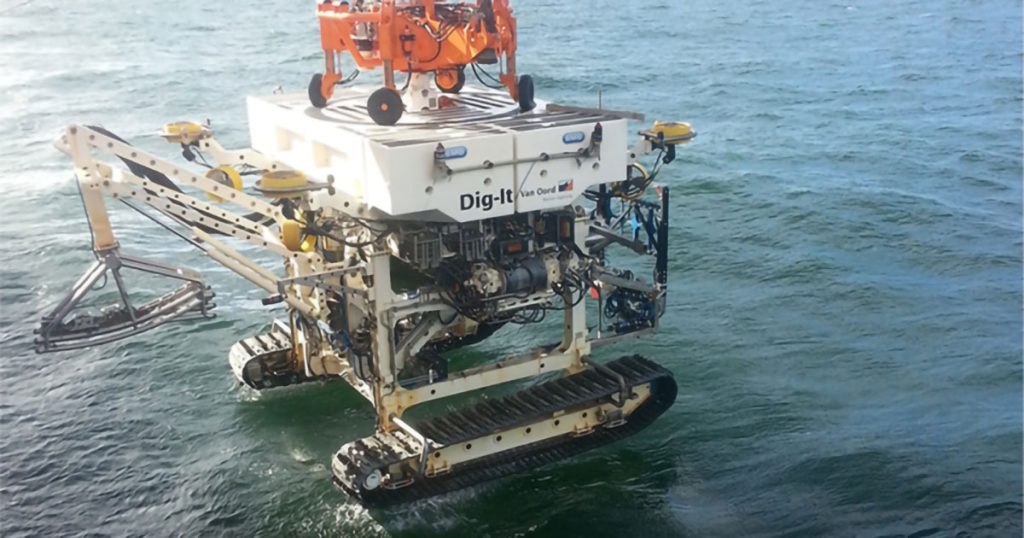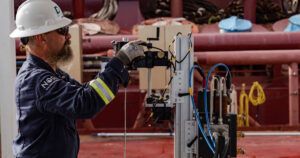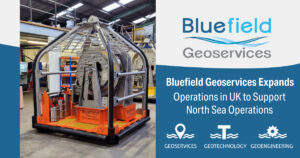Protection of subsea cables or pipelines is an essential part of any offshore development project, and one of the principal methods of protection is burial using a trenching machine. Survey work is an intrinsic part of any trenching project, both offshore and onshore.
It is imperative that development teams understand the likely underlying ground conditions so as to select the most appropriate means of intervention. Onshore, understanding the “lay of the land” is somewhat more immediate and there are a number of readily available resources—including Google Earth, for example—that can assist with identifying the topography of any project site. The next step of site investigation is to break ground, so to speak, and dig a trial pit or borehole to discover the type and strength of the underlying soils and groundwater levels. This analysis is critical to project planning and selecting the more appropriate pipeline and cable trenching equipment for deployment.
Offshore, things are less clear cut and, in many cases, more hazardous. You cannot simply walk a proposed trenching route and record the more immediate physical challenges of a project. Below the waterline there is another, often unknown, reality: a topography of hidden seafloor features, such as boulder fields, shipwrecks, or abandoned fishing gear. This is where we, the offshore industries, rely on geophysical and geotechnical survey tools and techniques. These capabilities allow us to produce a precise contoured map of the seabed, the detail of which is as pinpoint as any onshore topographic analysis. Furthermore, today we have breakthrough technologies that allow us to profile the underlying conditions and the geotechnical expertise to make some informed predictions as to the nature of these soils.
Comprehensive analysis of seabed soils relies on the adaptation of sampling and in situ testing techniques from onshore methods, and this has led to the development of some pioneering underwater equipment. These practices—and the subsequent data they render—are imperative to the selection of trenching equipment considered for use on any offshore site.
Onshore, most trenches are dug using a JCB or backhoe type excavator. If it turns out that this is not sufficient, we can always use a larger tracked or 360-excavator. If rock or hard ground is encountered, we can attach a pecker to the excavator to break up hard material. The key point here is that there are many types of excavator available of all shapes and sizes, each that can be rented for a few hundred £/$/€ per day. Even the rarer, heavy-duty excavators are mostly available within a day’s notice.
However, offshore trenchers are a far rarer breed, and this restricts availability—it may take weeks or even months to book a suitable trencher. We then have to consider the typical cost of a trencher, which may run in to the tens of thousands of £/$/€ per day once logistics and vessel transportation to site are factored in. In short, an offshore excavator can be over one hundred times more expensive than its onshore counterpart.
A further complication is that onshore trenches are open cut, and once the desired depth is achieved, the cable or pipeline can be laid. This gives flexibility if, for example, a larger excavator is required. Offshore, for good practical reasons, the cable or pipeline is laid on the seabed, and the trench dug underneath the product. While this removes any concern about the trench collapsing or how we place the product into the trench from a ship sitting 100 m above, it places increased emphasis on the right selection of trenching equipment. By virtue of this, the essential role that geophysical and geotechnical survey plays in the planning phase of any trenching assignment is evident.
Survey costs, in general, account for about 1% of any offshore trenching project and so represent excellent value for money when it comes to providing developers with the necessary assurances of working in challenging and often hazardous subsea environments. Effective offshore geotechnical and geophysical survey is directly reliant not only on a team of experts, but also on the access to a toolkit of technologies. Bluefield Geoservices have developed a number of proprietary systems to meet this demand, including the ROVcone and BOXcone, both of which are ideally suited to supporting subsea trenching operations. The installation of these systems on ROVs and/or trenching systems in the field can be achieved easily and cost effectively, providing high quality data in near real time. This in turn allows for timely decisions and efficient operations to be completed.




